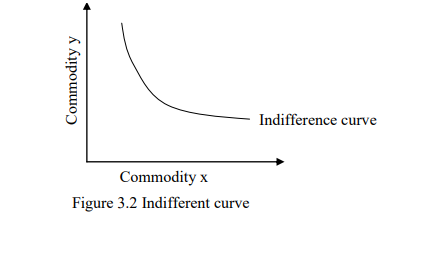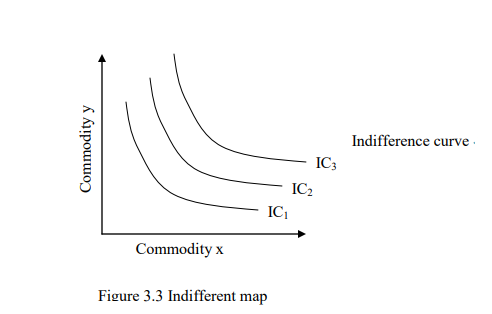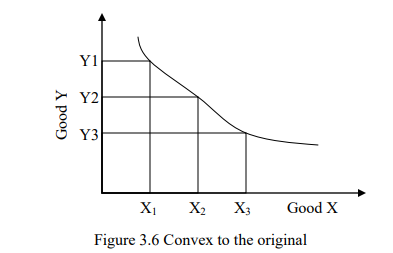This school of thought is opposed to the law that utility is measurable through cardinal numbers. This school of thought maintains that customer behaviour can be explained in terms of preference so that customers need to state the commodity they prefer without assigning numeral values without the strength of their preferences. Consumers are expected to value their preferences of the entire service market of goods and service in order to choose i.e. combination of two goods that can be chosen if the two goods are ranked. This is explained by the use of indifference curves. The assumptions of this approach are:
1. Price of goods is constant
2. Consumers are rational
3. Consumer can rank his/her preferences over time
4. Their behavior must be transitive i.e. if a consumer prefer A to B to l C then he can prefer A to C (axiom of transitivity)
5. Customer always prefer more to less of every commodity (axiom of non-station)
6. The slope of indifference curve gives the marginal rate of situation (M.R.S)
7. The consumer is able to order all the available combination (axiom completeness)
Indifference Curve
This is curve joining together all different combination of two goods that yield the same amount of utility to a consumer. It is a locus of point of possible combination of two alternative good that yield the same level of utility. The shape of indifference curve is called the marginal rate of situation (MRC) i.e. the rate at which good Y can be substituted for by good X leaving the consumer at the same level of utility.


Indifference map indicate different indifference curves drawn on the same plane price with different level of utility.
Properties of Indifference
- Indifference has a negative slope. This shows if the quality of one good say decrease the quality of other good must increase if the consumer has to remain on the same level of satisfaction
- Indifference curve do not intersect. This is because if they did the point of intersection implies two levels of satisfaction which is not possible. consider the Figure 3.4

Since combination A and C are on the same indifference come u2 the consumer must be indifferent between them. Band C are on the same in difference curve u, the consumer Indifference curve must be indifferent between then. If the consumer is indifferent between A and C then the he must be indifferent between A and B (considering the rule of transitivity). This is however, absurd since the combination A contains more of Y and more of X and thus preferring A to B. To be consistent with consumption assumption of rationality it can be concluded that indifference curve cannot intersect.
3.They are convex to the original This implies that if the slope of indifference decrease in absolute terms as we move longs the curve from left downwards to the right therefore the marginal rate of the substance will be decreasing or diminishing as show in Figure 3.6.

The theory of diminishing marginal rate of substitute expresses the observed behavior that as people consume more of a good, the utility they gain from each excessive unit decline. As the number of units of X the customer is will to sacrifice in order to obtain
additional unit of Y decrease as the quantity of Y rises. Therefore it is difficult to substitute X for Y as the customer consume more of y and vice verse.